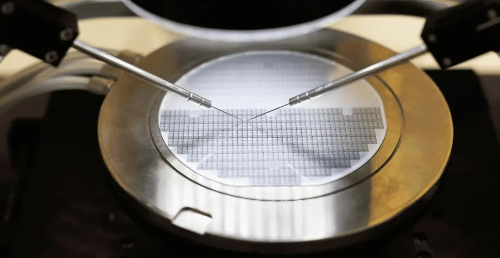ASTM B338 Standard Specification for Seamless and Welded Titanium and Titanium Alloy Tubes for Condensers and Heat Exchangers
ASTM Standard Specification for Seamless and Welded Titanium and Titanium Alloy Tubes for Condensers and Heat Exchangers: Chemical Compositions
|
Products |
Compositions |
|
UNS R50250 |
Unalloyed titanium |
|
UNS R50400 |
Unalloyed titanium |
|
UNS R50550 |
Unalloyed titanium |
|
UNS R52400 |
0.12 to 0.25 % palladium |
|
UNS R56320 |
3 % aluminum, 2.5 % vanadium |
|
UNS R52250 |
0.12 to 0.25 % palladium |
|
UNS R53400 |
0.3 % molybdenum, 0.8 % nickel |
|
UNS R53413 |
0.5 % nickel, 0.05 % ruthenium |
|
UNS R53414 |
0.5 % nickel, 0.05 % ruthenium |
|
UNS R53415 |
0.5 % nickel, 0.05 % ruthenium |
|
UNS R52402 |
0.04 to 0.08 % palladium |
|
UNS R52252 |
0.04 to 0.08 % palladium |
|
UNS R56322 |
3 % aluminum, 2.5 % vanadium, and 0.04 to 0.08 % palladium |
|
UNS R52404 |
0.08 to 0.14 % ruthenium |
|
UNS R52254 |
0.08 to 0.14 % ruthenium |
|
UNS R56323 |
3 % aluminum, 2.5 % vanadium, and 0.08 to 0.14 % ruthenium |
|
UNS R53530 |
0.3 % cobalt, 0.05 % palladium |
|
UNS R53532 |
0.3 % cobalt, 0.05 % palladium |
|
UNS R53442 |
0.4 % nickel, 0.015 % palladium, 0.025 % ruthenium, and 0.15 % chromium |
|
UNS R53445 |
0.4 % nickel, 0.015 % palladium, 0.025 % ruthenium, and 0.15 % chromium |
|
UNS R56340 |
4.5 % aluminum, 2 % molybdenum, 1.6 % vanadium, 0.5 % iron, and 0.3 % silicon |
|
UNS R58450 |
45 % niobium |
|
UNS R52815 |
1.5 % aluminum |
|
UNS R54250 |
4 % aluminum, 2.5 % vanadium, and 1.5 % iron |
|
UNS R53390 |
0.25 % iron, 0.4 % silicon |
|
UNS R58450 |
45 % niobium |
|
UNS R52815 |
1.5 % aluminum |
|
UNS R54250 |
4 % aluminum, 2.5 % vanadium, and 1.5 % iron |
|
UNS R56461 |
6 % aluminum, 1 % iron |
ASTM Standard Specification for Seamless and Welded Titanium and Titanium Alloy Tubes for Condensers and Heat Exchangers: Dimensions Tolerance
|
Outside Diameters |
Diameter Tolerance |
Permissible Variations in Wall Thickness |
|
Under 1 in./ 25.4mm, excl |
±0.004 in./ ±0.102mm |
±10t% |
|
1 to 1+1/2 in./ 25.4 to 38.1mm, excl |
±0.005 in./ ±0.127mm |
±10t% |
|
1+1/2 to 2 in./ 38.1 to 50.8mm, excl |
±0.006 in./ ±0.152mm |
±10t% |
|
2 to 2+1/2 in./ 50.8 to 63.5mm, excl |
±0.007 in./ ±0.178mm |
±10t% |
|
2+1/2 to 3+1/2 in./ 63.5 to 88.9mm, excl |
±0.010 in./ ±0.254mm |
±10t% |
|
Length |
Maximum Curvature Depth of Arc |
|
Over 3 to 6ft/ 0.91 to 1.83mm, incl |
1/8 in. or 3.2 mm |
|
Over 6 to 8ft/ 1.83 to 2.44mm, incl |
3/16 in. or 4.8 mm |
|
Over 8 to 10ft/ 2.44 to 3.05mm, incl |
1/4 in. or 6.4 mm |
|
Over 10ft/ 3.05mm |
1/4 in./any 10 ft or 2.1 mm/m |
ASTM Standard Specification for Seamless and Welded Titanium and Titanium Alloy Tubes for Condensers and Heat Exchangers: FAQs
1. What is ASTM B338?
ASTM B338 is a standard specification set by the American Society for Testing and Materials (ASTM) that outlines the requirements for seamless and welded titanium and titanium alloy tubes, specifically designed for use in condensers and heat exchangers.
2. Which materials are covered under ASTM B338?
The standard covers a range of titanium grades, including unalloyed titanium (UNS R50250, R50400, R50550), grades with palladium (e.g., UNS R52400, R52250), grades with aluminum and vanadium (e.g., UNS R56320), and other specific alloy compositions designed for various industrial applications.
3. What are the chemical composition requirements for ASTM B338 tubes?
The standard specifies the chemical composition for each titanium grade, ranging from pure unalloyed titanium to alloys containing elements like palladium, aluminum, vanadium, molybdenum, nickel, and others to enhance certain properties.
4. What are the dimensional tolerances for titanium tubes as per ASTM B338?
ASTM B338 outlines specific tolerances for outside diameters and wall thicknesses of titanium tubes, varying by the size of the tube. Tolerances ensure that tubes meet precise dimensional requirements for their intended application.
5. How does ASTM B338 categorize titanium tubes for condensers and heat exchangers?
The standard classifies tubes based on their diameter, wall thickness, and length, providing tolerances and permissible variations to ensure they fit the precise requirements of condensers and heat exchangers.
6. What are the quality assurance measures for ASTM B338 titanium tubes?
Manufacturers and suppliers must adhere to strict quality control processes, including chemical analysis, mechanical testing, and dimensional inspections, to ensure that the tubes meet the ASTM B338 standard specifications.









